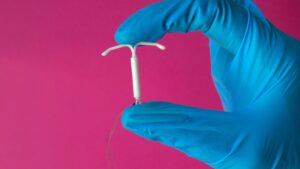
In recent years, the field of contraception has witnessed significant advancements, providing individuals with a myriad of choices to suit their unique needs and preferences. One such highly effective and long-term contraceptive option is the Intrauterine Device (IUD). In this blog, we will delve into the world of IUDs, exploring their benefits, considerations, and why they have become a popular choice among many individuals.
Understanding IUDs: An Intrauterine Device is a small, T-shaped contraceptive device that is inserted into the uterus to prevent pregnancy. There are two main types of IUDs: hormonal and non-hormonal (copper). Both types work by altering the uterine environment, making it inhospitable for fertilization and implantation.
Benefits of IUDs:
- Highly Effective: IUDs are among the most effective forms of contraception, with a success rate of over 99%. Once inserted, they provide long-term protection, ranging from 3 to 10 years depending on the type.
- Low Maintenance: Unlike daily oral contraceptives or other short-term methods, IUDs require minimal maintenance. Once inserted, they offer continuous protection without the need for daily attention.
- Hormonal and Non-Hormonal Options: IUDs come in hormonal and non-hormonal varieties, allowing individuals to choose the type that best aligns with their preferences and health considerations.
- Rapid Reversibility: If an individual decides to conceive, IUD removal is a straightforward process. Fertility generally returns quickly after removal, making it a reversible option for those who plan to start a family in the future.
- Reduced Menstrual Bleeding: Hormonal IUDs, in particular, are known to reduce menstrual bleeding and cramping. This can be a significant advantage for individuals who experience heavy periods or menstrual pain.
Considerations Before Choosing an IUD:
- Consultation with a Healthcare Provider: Before opting for an IUD, it is crucial to consult with a healthcare provider. They can assess individual health factors, discuss preferences, and help determine the most suitable type of IUD.
- Potential Side Effects: While many individuals tolerate IUDs well, there can be potential side effects, such as irregular bleeding, cramping, or changes in mood. Understanding these potential side effects is essential for informed decision-making.
- Initial Discomfort: The process of IUD insertion may cause some discomfort or cramping. However, this is typically a short-lived sensation and varies from person to person.
- Cost Considerations: While IUDs are cost-effective in the long run, the upfront cost can be a consideration for some individuals. It’s important to weigh the initial expense against the long-term benefits.
Intrauterine Devices offer a highly effective and convenient contraceptive option for individuals seeking long-term protection. Whether opting for a hormonal or non-hormonal IUD, the key is informed decision-making through consultation with a healthcare provider. As advancements in reproductive health continue, IUDs stand as a testament to the evolving landscape of contraception, providing individuals with more choices than ever before.


